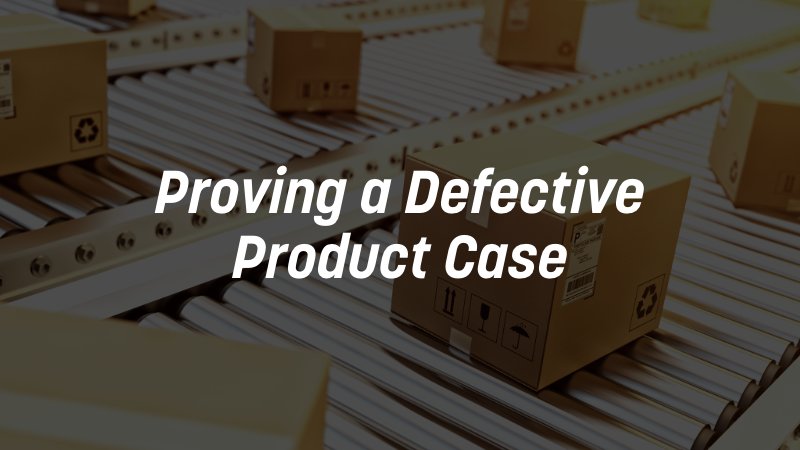As a consumer, you have the right to assume that the products you purchase are not dangerous and have been through rigorous safety testing. Unfortunately, this is not always the case. The National Safety Council reported that in 2022, 12.7 million people went to emergency departments for injuries caused by consumer products. To obtain financial compensation for a defective product, you will need to prove the required elements of your claim.

What Is a Product Liability Claim?
A product liability claim in Nevada can be filed against a manufacturing company, distributor, retailer or someone else in the supply chain who is found responsible for releasing a dangerous or defective product to the public. This type of civil lawsuit seeks financial compensation for the victim’s injuries and losses, such as medical bills and property damage.
In a product liability claim, the filing party or plaintiff bears the burden of proof. This means the plaintiff must establish the truth of what he or she is claiming. The burden of proof is a “preponderance of the evidence,” or more likely to be true than not true. Meeting this burden of proof requires clear and convincing evidence of the required elements of the claim.
Strict Product Liability
Three main legal doctrines are used to prove product liability claims. The first is strict product liability, where a manufacturer is held liable for allowing a defective product to fall into the hands of a consumer, regardless of the question of negligence. In this type of case, the plaintiff does not have to prove that the defendant, or accused party, was negligent or failed to meet the required standards of care.
Proving a strict product liability claim requires evidence of four elements:
- The product was defective.
- You used the product as the manufacturer intended.
- The product caused your injury or property damage
- You suffered compensable losses as a result.
The three types of product defects used in a strict liability claim are design flaws, manufacturing mistakes and marketing errors. If your Las Vegas product liability lawyer can prove that one of these defects exists, you generally do not have to prove negligence to qualify for financial compensation from the manufacturing company.
Negligence or Breach of Warranty
The other two legal doctrines used in product liability cases are negligence and breach of warranty. Proving negligence requires evidence of the following elements:
- The manufacturer or defendant owed you a duty of care, or had a legal obligation to act with reasonable care to prevent your injury.
- The defendant breached or violated the duty of care owed to you through a negligent act or omission, such as failing to safety-test its products.
- The defendant’s breach of duty caused or significantly contributed to your defective product injury or loss.
- You were using the product the way the manufacturer intended a consumer to use it at the time of your injury.
A breach of warranty case, on the other hand, requires evidence that the defendant failed to fulfill a promise or guarantee made to consumers that the product should not cause harm. This could be an express or implied warranty.
Steps to Take to Build Your Defective Product Case
If a defective product injures you in Las Vegas, keep the item and all of its packaging. Take photos of the product and your injuries or property damage. Contact the manufacturer or seller to notify them about the defect without delay. Keep a record of all losses, including medical bills and expenses, related to the incident. Then, contact an injury attorney to discuss your rights and legal options as an injured consumer.
Speak to a product liability lawyer today at no cost or obligation. Contact Koch & Brim, LLP for a free case review.